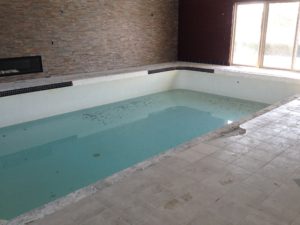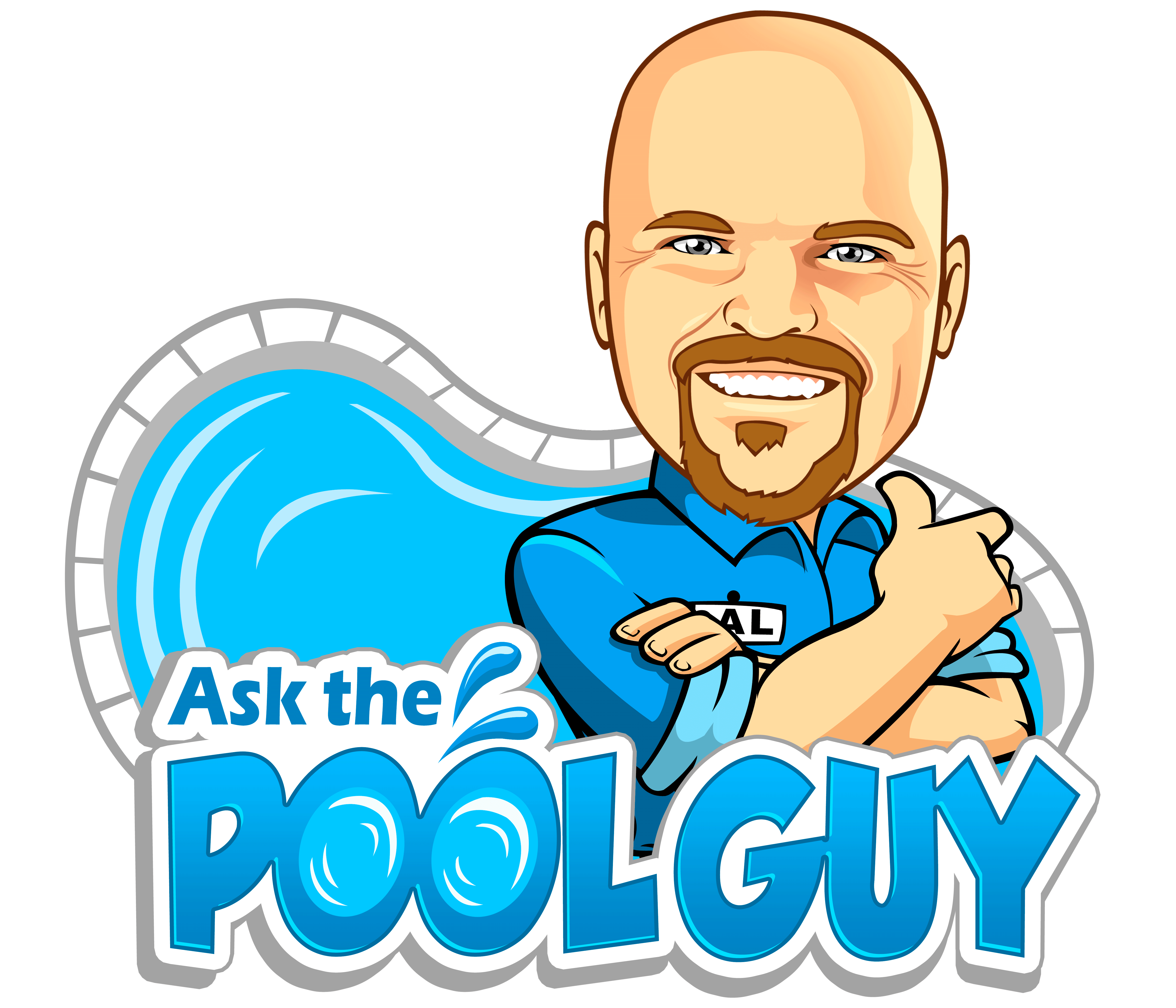
 Once a pool has been painted over a gunite, marcite, or pebble pool finish, it will likely need more frequent maintenance and painting year after year.
Once a pool has been painted over a gunite, marcite, or pebble pool finish, it will likely need more frequent maintenance and painting year after year.
Once a pool has been painted, it should always be repainted with the same type of paint. Paint manufacturers often have instructions of how they will identify the paint for you if a sample is sent into them and the paint type is unknown.
Here are a couple of at home tests you can attempt to determine the type of paint that was used to paint your pool.
- Use denatured alcohol and immerse a paint chip of approx 1″ in size. If the chip dissolves, the paint is a water-based acrylic paint. If the chip does not dissolve, use a second (new chip) and move to step 2.
- Take a 1″ paint chip and immerse in a solution of 3 parts mineral spirits and 1 part Xylol – allow to soak for 30 seconds, and rub the chip between your fingers. If it dissolves, it is a synthetic, rubber base coating paint. If the chip does not dissolve, use a third new chip and move to step 3.
- Immerse a new 1″ chip in 100% Xylol. If the chip dissolves it is chlorinated rubber. If the chip does not dissolve, it is epoxy.
The Type of Paint Available to Paint Gunite Swimming Pools:
Water Based Acrylic
Water based acrylic paint for swimming pools has the quickest curing/drying time of the paint types available. The dry time for a water based acrylic pool paint is 3 days (dry days!) for outdoor pools and 6 days for indoor pools, and for this reason is the type of paint that allows the pool to be refilled the quickest. The drawback is that this type of paint is rated for one season for a commercial pool and up to 2 seasons for a residential pool – which is the shortest lifespan of swimming pool paints.
Water based acrylic paint can be used on a concrete or plaster pool that has not been painted before. Water based acrylic paint can also be used on a pool that was previously painted with a synthetic rubber paint, an epoxy pool paint, or an acrylic pool paint.
Water based synthetic pool paint is not recommended for use on gunite or on a fiberglass pool surface, nor should it be used on a hot tub or spa surface.
Water based synthetic paint will dry to an eggshell finish. It is the least chemical resistant type of paint, and the least stain resistant paint available for pools.
Premium Acrylic
The premium acrylic paints have been designed with environmental quality control in mind, and the VOC (volatile organic compounds). The premium acrylic paints have repalced the use of chlorinated or synthetic rubber based paints for these reasons. Acrylic paint can be used on a pool that has not been previously painted. Acrylic paint can be used to paint a pool that has been previously painted with acrylic paint, or if chlorinated rubber or synthetic rubber paint had previously been used. The surface can be damp when it is applied, and the paint will dry to a high gloss finish. The curing/drying time for a premium acrylic pool paint is 5 days for outdoor pools and up to 7 days for indoor pools with the proper ventilation.
Acrylic paints should not be used on a fiberglass pool surface, or a fiberglass hot tub or spa surface. Acrylic paint is also not for use on wood surfaces. Acrylic paint is not as chemical resistant as epoxy paint, and it will also likely chalk over time. The life expectancy of a premium acrylic paint is up to 4 years.
Chlorinated Rubber
Chlorinated rubber paints were once a popular type of paint for swimming pools but are not currently manufactured because of environmental concerns and are no longer readily available.
Epoxy
Epoxy pool paint is a solvent based paint and is likely the type that will last the longest, be most unaffected by chemicals, stains and abraisions (as compared to the other types of paint). The lifetime of an epoxy paint may be as long as 8 years if applied properly and if it dries to the durable satin finish. Epoxy paint can be used on a pool that has not been painted before and has a base of concrete, plaster, fiberglass or gunite. Epoxy paint should only be used to repaint a pool if the pool had previously been painted with epoxy paint. The epoxy paint will build up a layer over the surface of approx. 8 mils, and because of this thickness could help to smooth rough surfaces.
To prep for the application of epoxy paint is the most complicated of the painting methods. The pool should be cleaned, and acid washed. Fiberglass that has not been painted, and surfaces that have been painted with epoxy paint previously would need to be sanded to an #80 grit. A condensation test should be performed, and the paint applied after the test confirms that no condensation is present on the pool surface. Epoxy paint is sold in a two gallon kit – and must be mixed in the individual gallons, and then mixed together before application. Epoxy paint takes the longest to dry, with approximately 5-7 days for outdoor pools and up to 14 days for indoor pools with proper ventilation.
Epoxy paint will chalk over time as it is in contact with pool chemicals and exposed to UV light.
